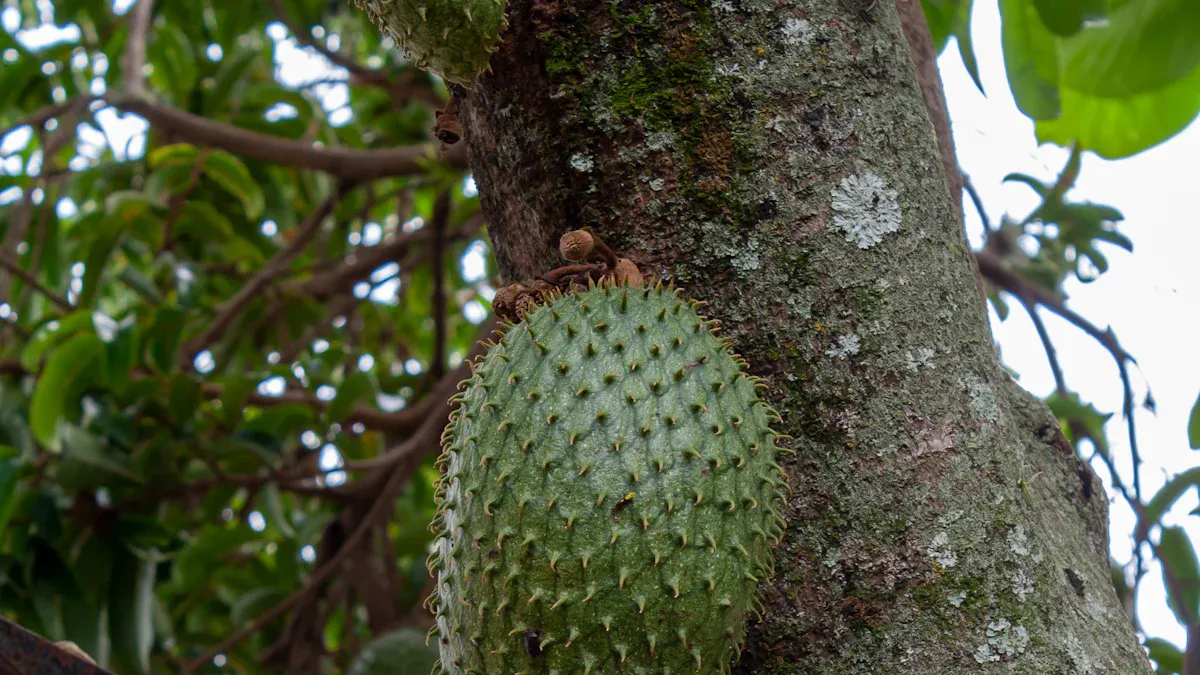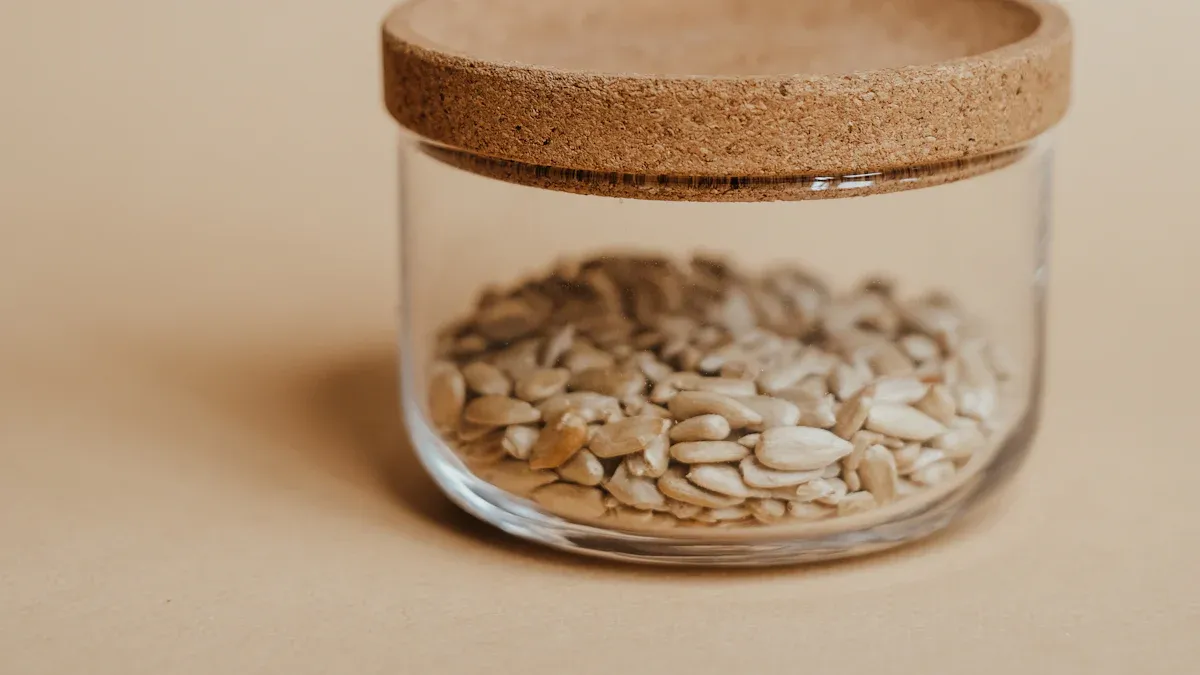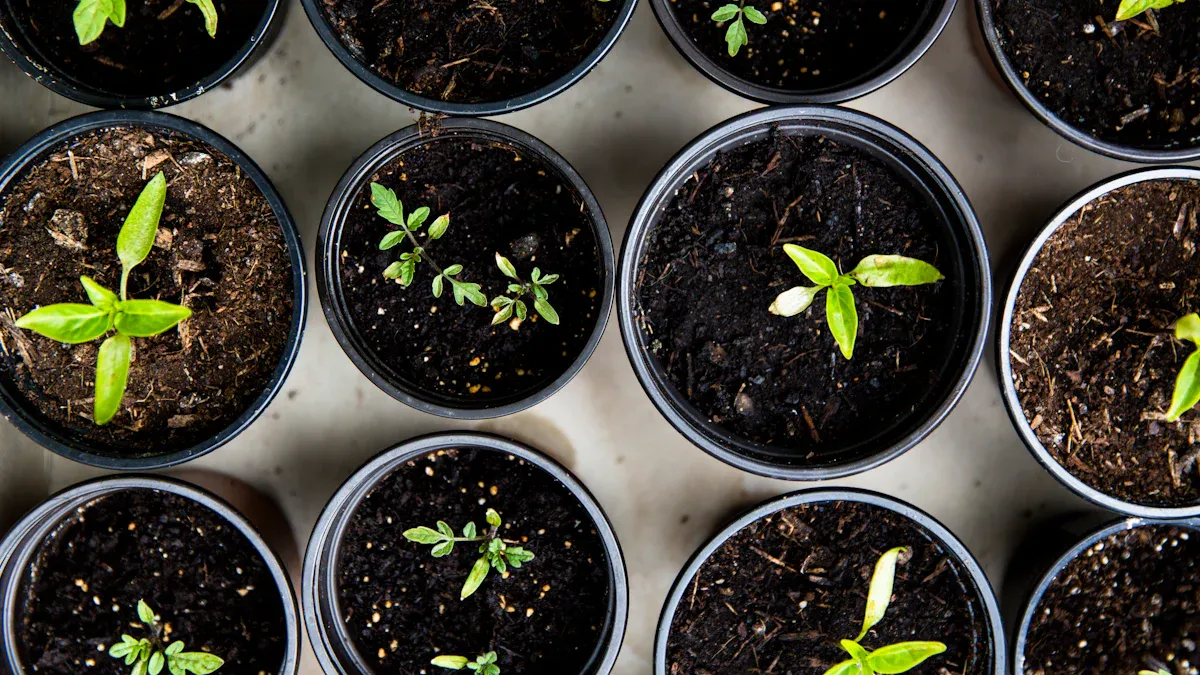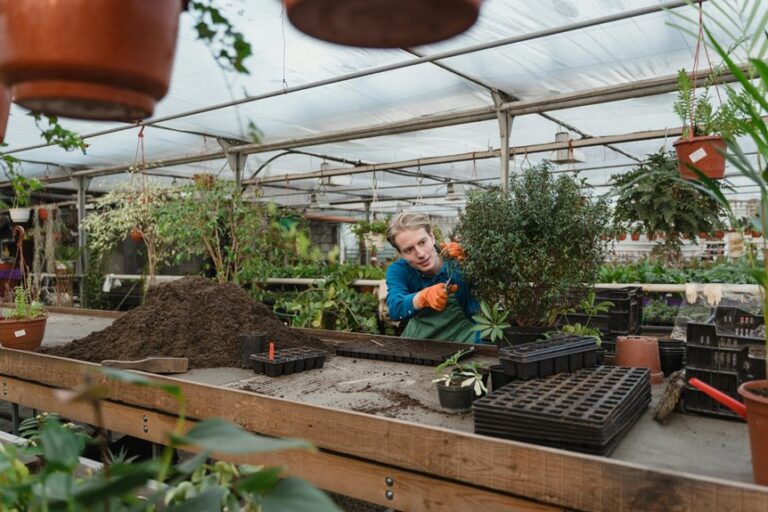
Proper seed management plays a vital role in achieving healthy soursop growth. You can enhance your cultivation success by focusing on three core processes: storing, sowing, and germination. Following best practices leads to numerous benefits, including faster sprouting and stronger seedlings. For example, soaking seeds speeds up the sprouting process, while using appropriate soil mixes ensures optimal growth conditions. Here’s a quick look at some key practices:
Practice | Benefit |
|---|---|
Soaking seeds | Speeds up the sprouting process, showing signs of growth faster than unsoaked seeds. |
Using appropriate soil mixes | Ensures optimal growth conditions for seedlings, promoting healthy development. |
Providing proper light | Helps seedlings thrive, as they can tolerate partial sun after developing a few leaves. |
By managing your soursop plant seeds well, you set the stage for a fruitful harvest.
Key Takeaways
Store soursop seeds in cool, dry conditions to keep them viable. Use airtight containers to protect against moisture and pests.
Prepare well-draining, nutrient-rich soil for sowing. Mix in compost to enhance growth conditions for seedlings.
Monitor moisture and temperature during germination. Keep soil consistently moist but not waterlogged for best results.
Sow seeds about 1 inch deep and space them 2 to 3 feet apart. This spacing allows each plant to grow without competition.
Provide adequate sunlight and water to seedlings. Regular checks can prevent issues like yellowing leaves or wilting.
Soursop Plant Seeds Storage

To ensure the best results, you must store your soursop plant seeds under ideal conditions. The right environment can significantly enhance seed viability and germination rates. Here are some key factors to consider:
Ideal Conditions
Temperature: Store your seeds at a temperature around -18 ± 3°C. This cold storage helps preserve their viability.
Humidity: Maintain relative humidity at approximately 15 ± 3 percent. High humidity can lead to mold growth, while low humidity can dry out the seeds.
Tip: Use airtight containers to protect your seeds from moisture and pests. This simple step can make a big difference in maintaining seed quality.
Duration of Storage
Soursop plant seeds can be stored for several months before you need to sow them. However, keep in mind that prolonged storage can negatively impact germination rates. Research shows that seeds experience a rapid decline in viability when stored for extended periods. This degradation often occurs within just a few months. Therefore, it is crucial to monitor your seeds and use them within a reasonable timeframe to ensure successful germination.
Avoid common mistakes such as storing seeds in warm, humid places or leaving them exposed to light. These factors can compromise seed quality and reduce your chances of a successful planting.
By following these guidelines, you can effectively manage your soursop plant seeds and set the stage for healthy growth.
Soursop Plant Seeds Sowing

Sowing soursop plant seeds requires careful attention to soil preparation and the techniques you use. Proper practices can lead to successful germination and healthy seedlings. Here’s how to get started.
Soil Preparation
Before you sow your seeds, prepare the soil to create the best environment for growth. Follow these steps:
Choose the Right Soil: Soursop plants thrive in well-draining soils. Opt for sandy loam or loamy sand. These types of soil allow excess water to drain away, preventing root rot.
Test Soil Drainage: Ensure that your soil drains well. You can do this by digging a hole and filling it with water. If the water drains within a few hours, your soil is suitable. If it remains soggy, consider mixing in sand or perlite to improve drainage.
Add Organic Matter: Mix in compost or well-rotted manure. This addition enriches the soil with nutrients, promoting healthy seedling growth.
Moisten the Soil: Keep the soil consistently moist but not soggy. Overly wet soil can hinder germination and lead to disease.
Tip: Avoid dense clay soils. They retain too much moisture, which can harm the roots and stunt growth.
Sowing Techniques
Once your soil is ready, it’s time to sow your soursop plant seeds. Here’s how to do it effectively:
Timing: The best time to sow soursop seeds is during the warm months. Aim for late spring or early summer when temperatures are consistently warm.
Planting Depth: Sow the seeds about 1 inch deep in the prepared soil. This depth helps protect the seeds from drying out while allowing them to receive adequate moisture.
Spacing: Space the seeds about 2 to 3 feet apart. This distance allows each plant enough room to grow without competing for nutrients.
Watering: After sowing, gently water the area to settle the soil around the seeds. Be careful not to wash away the seeds or create puddles.
By following these soil preparation and sowing techniques, you can create an ideal environment for your soursop plant seeds. This careful approach will help ensure successful germination and robust growth.
Germination of Soursop Plant Seeds
Germination is a critical phase in the life of soursop plant seeds. Understanding the requirements for successful germination helps you achieve healthy seedlings. Here’s what you need to know:
Germination Requirements
To ensure your soursop plant seeds germinate effectively, pay attention to the following conditions:
Temperature: Soursop seeds thrive in warm conditions. Keep temperatures above 32°F (0°C) for optimal germination.
Moisture: High humidity and ample water are essential. Ensure the soil remains consistently moist but not waterlogged.
Timeframe: Under optimal conditions, expect germination to take between 15 to 30 days. However, if conditions are less than ideal, germination may take up to 2-3 months.
Tip: Regularly check the moisture levels in the soil. This practice prevents the seeds from drying out, which can hinder germination.
Monitoring Growth
Once your soursop plant seeds begin to germinate, monitoring their growth becomes crucial. Here are some key aspects to keep an eye on:
Watering: Ensure you water the seedlings consistently. This support is vital for their shallow root systems.
Sunlight: Provide adequate sunlight. Insufficient light can lead to yellowing leaves, indicating stress in the seedlings.
Pest Management: Watch for pests like aphids. Address any pest issues promptly to maintain healthy seedlings.
Common challenges during germination include fungal pathogens that can hinder growth. Using acid scarification treatment can help raise disease-free seedlings.
Note: If you notice yellowing leaves, it may indicate overwatering or insufficient sunlight. Wilting suggests underwatering, which can also affect seedling health.
When your seedlings reach a suitable size, consider transplanting them. Here are some best practices for a successful transition:
Mulching: Mulch the seedlings well to retain moisture.
Consistent Watering: Continue to water the seedlings consistently to support their growth.
By following these guidelines, you can ensure that your soursop plant seeds germinate successfully and grow into healthy plants.
In summary, managing your soursop plant seeds effectively involves proper storage, careful sowing, and attentive germination practices. Here are some key takeaways:
Store seeds in cool, dry conditions to maintain viability.
Prepare nutrient-rich, well-drained soil for sowing.
Monitor moisture and temperature during germination.
By following these guidelines, you can enhance your chances of growing healthy soursop plants. 🌱 Feel free to share your experiences or ask any questions in the comments below!
FAQ
What is the best way to store soursop seeds?
Store soursop seeds in a cool, dry place. Use airtight containers to protect them from moisture and pests. Aim for a temperature around -18 ± 3°C and maintain humidity at about 15 ± 3 percent.
How long can I store soursop seeds?
You can store soursop seeds for several months. However, use them within six months for the best germination rates. Prolonged storage can decrease seed viability significantly.
When is the best time to sow soursop seeds?
The ideal time to sow soursop seeds is during late spring or early summer. This timing ensures warm temperatures, which are crucial for successful germination.
How deep should I plant soursop seeds?
Plant soursop seeds about 1 inch deep in well-prepared soil. This depth protects the seeds from drying out while allowing them to absorb moisture effectively.
What should I do if my seedlings are yellowing?
Yellowing leaves may indicate overwatering or insufficient sunlight. Check your watering schedule and ensure your seedlings receive adequate light to promote healthy growth.


